 W
WGetFEM++ is a generic finite element C++ library with interfaces for Python, Matlab and Scilab. It aims at providing finite element methods and elementary matrix computations for solving linear and non-linear problems numerically. Its flexibility in choosing among different finite element approximations and numerical integration methods is one of its distinguishing characteristics.
 W
WAbaqus FEA is a software suite for finite element analysis and computer-aided engineering, originally released in 1978. The name and logo of this software are based on the abacus calculation tool. The Abaqus product suite consists of five core software products:Abaqus/CAE, or "Complete Abaqus Environment". It is a software application used for both the modeling and analysis of mechanical components and assemblies (pre-processing) and visualizing the finite element analysis result. A subset of Abaqus/CAE including only the post-processing module can be launched independently in the Abaqus/Viewer product. Abaqus/Standard, a general-purpose Finite-Element analyzer that employs implicit integration scheme (traditional). Abaqus/Explicit, a special-purpose Finite-Element analyzer that employs explicit integration scheme to solve highly nonlinear systems with many complex contacts under transient loads. Abaqus/CFD, a Computational Fluid Dynamics software application which provides advanced computational fluid dynamics capabilities with extensive support for preprocessing and postprocessing provided in Abaqus/CAE. Abaqus/Electromagnetic, a Computational electromagnetics software application which solves advanced computational electromagnetic problems.
 W
WAutodesk Simulation is a general-purpose multiphysics finite element analysis software package initially developed by ALGOR Incorporated and acquired by Autodesk in January 2009. It is intended for use with Microsoft Windows and Linux operating systems. It is distributed in a number of different core packages to cater to specific applications, such as mechanical event simulation and computational fluid dynamics.
 W
WCOMSOL Multiphysics is a cross-platform finite element analysis, solver and multiphysics simulation software. It allows conventional physics-based user interfaces and coupled systems of partial differential equations (PDEs). COMSOL provides an IDE and unified workflow for electrical, mechanical, fluid, acoustics, and chemical applications.
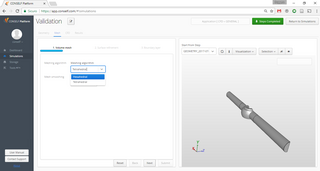 W
WCONSELF is a computer-aided engineering (CAE) platform used by engineers for design purposes. The platform, which highly relies on cloud computing, is developed by CONSELF SRL since its first release in October 2015. In March 2016 a new release of the platform defined guided workflows for the users with focus on turbomachinery, fire scenarios and flows with dispersed solid particles. Through the platform it is possible to run both Computational Fluid Dynamics and Finite Element Analysis. Among the solvers and libraries used by CONSELF platform, a number of open-source technologies are included, such as:FEA: Code_Aster CFD: OpenFOAM
 W
WDIANA is a Finite Element Analysis (FEA) solver that does basic and advanced analysis of various structures. DIANA FEA BV develops the software and with several resellers, distributes it worldwide. A selection of material models, element libraries, and analysis procedures within the package gives DIANA flexibility. Engineers have used DIANA to design and analyse dams and dikes, tunnels and underground structures, oil & gas, historical constructions, and large reinforced concrete structures. Some specialised analyses available in DIANA for these fields of use include seismic analysis, fire analysis, and young hardening concrete.
 W
WFEATool Multiphysics is a physics, finite element analysis (FEA), and PDE simulation toolbox. FEATool Multiphysics features the ability to model fully coupled heat transfer, fluid dynamics, chemical engineering, structural mechanics, fluid-structure interaction (FSI), electromagnetics, as well as user-defined and custom PDE problems in 1D, 2D (axisymmetry), or 3D, all within a graphical user interface (GUI) or optionally as script files. FEATool has been employed and used in academic research, teaching, and industrial engineering simulation contexts.
 W
WThe FEniCS Project is a collection of free and open-source software components with the common goal to enable automated solution of differential equations. The components provide scientific computing tools for working with computational meshes, finite-element variational formulations of ordinary and partial differential equations, and numerical linear algebra.
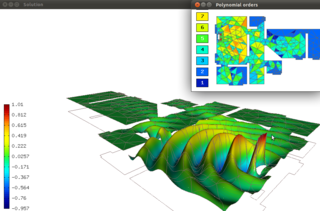 W
WHermes2D is a C++/Python library of algorithms for rapid development of adaptive hp-FEM solvers. hp-FEM is a modern version of the finite element method (FEM) that is capable of extremely fast, exponential convergence.
 W
WHFSS is a commercial finite element method solver for electromagnetic structures from Ansys. The acronym stands for high-frequency structure simulator. HFSS is one of several commercial tools used for antenna design, and the design of complex radio frequency electronic circuit elements including filters, transmission lines, and packaging. It was originally developed by Professor Zoltan Cendes and his students at Carnegie Mellon University. Prof. Cendes and his brother Nicholas Cendes founded Ansoft and sold HFSS stand-alone under a 1989 marketing relationship with Hewlett-Packard, and bundled into Ansoft products. In 1997 Hewlett-Packard acquired Optimization Systems Associates Inc. (OSA), a company John Bandler founded in 1983. HP's acquisition was driven by the HP's need for an optimization capability for HFSS. After various business relationships over the period 1996–2006, HP and Ansoft went their separate ways: Agilent with the critically acclaimed FEM Element and Ansoft with their HFSS products, respectively. Ansoft was later acquired by Ansys.
 W
WJCMsuite is a finite element analysis software package for the simulation and analysis of electromagnetic waves, elasticity and heat conduction. It also allows a mutual coupling between its optical, heat conduction and continuum mechanics solvers. The software is mainly applied for the analysis and optimization of nanooptical and microoptical systems. Its applications in research and development projects include dimensional metrology systems, photolithographic systems, photonic crystal fibers, VCSELs, Quantum-Dot emitters, light trapping in solar cells, and plasmonic systems. The design tasks can be embedded into the high-level scripting languages MATLAB and Python, enabling a scripting of design setups in order to define parameter dependent problems or to run parameter scans.
 W
WJMAG is simulation software for the development and design of electrical devices. JMAG was originally released in 1983 as a tool to support design for devices such as motors, actuators, circuit components, and antennas.
 W
WLS-DYNA is an advanced general-purpose multiphysics simulation software package developed by the former Livermore Software Technology Corporation (LSTC), which was acquired by Ansys in 2019. While the package continues to contain more and more possibilities for the calculation of many complex, real world problems, its origins and core-competency lie in highly nonlinear transient dynamic finite element analysis (FEA) using explicit time integration. LS-DYNA is used by the automobile, aerospace, construction and civil engineering, military, manufacturing, and bioengineering industries.
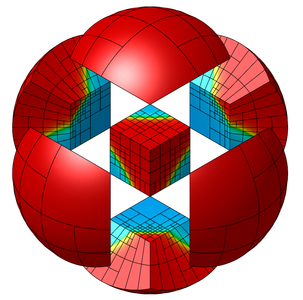 W
WMFEM is an open-source C++ library for solving partial differential equations using the finite element method, developed and maintained by researchers at the Lawrence Livermore National Laboratory and the MFEM open-source community on GitHub. MFEM is free software released under a BSD license.
 W
WMidas Civil is a structural engineering software application used for bridge structural modelling, analysis and design, including compliance checks for load testing and works with several civil engineering specifications.
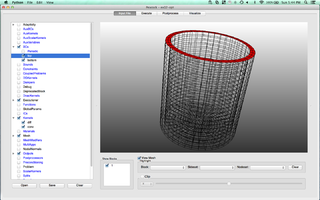 W
WMOOSE is an object-oriented C++ finite element framework for the development of tightly coupled multiphysics solvers from Idaho National Laboratory. MOOSE makes use of the PETSc non-linear solver package and libmesh to provide the finite element discretization.
 W
WNEi Fusion is a finite element analysis program sold by NEi Software that is used by engineers to build and analyze 3D models of parts and assemblies of various products. NEi Fusion digital-simulation software virtually applies forces, pressures, vibration, acceleration loads, or thermal conditions to 3D models of parts, structures, and assemblies. It obtains results of various engineering parameters, such as deformation, stresses, strains, temperature distributions, and modal shapes the design would experience if implemented. The results, which range from tables of data to contour plots and animations, provide engineering insight. For example, result visualizations like color-coded, contour plots can help deepen understanding of physical phenomena in complex geometry. NEi Fusion consists of a 3D parametric CAD modeler powered by SolidWorks with NEi Nastran finite element analysis solvers. NEi Fusion runs on Microsoft Windows and provides CAD modeling, import and meshing tools.
 W
WNEi Nastran was an engineering analysis and simulation software product of NEi Software Based on NASA's Structural Analysis program NASTRAN, the software is a finite element analysis (FEA) solver used to generate solutions for linear and nonlinear stress, dynamics, and heat transfer characteristics of structures and mechanical components. NEi Nastran software is used with all major industry pre and post processors including Femap, a product of Siemens PLM Software, in house brands NEi Nastran in-CAD, NEi Fusion, and NEi Works for SolidWorks. This software was acquired by Autodesk in May 2014.
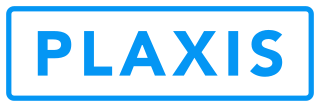 W
WPlaxis is a computer programme that performs finite element analyses (FEA) within the realm of geotechnical engineering, including deformation, stability and water flow. The input procedures enable the enhanced output facilities provide a detailed presentation of computational results. PLAXIS enables new users to work with the package after only a few hours of training.
 W
WQuickField is a finite element analysis software package running on Windows platforms. It is developed by the Danish company Tera Analysis Ltd. in cooperation with Russian firm Tor Ltd. QuickField is available as a commercial program or as a free Student Edition with limited functionality. Main applications include computer simulations of electromagnetic fields for scientific and industrial purposes, and use as a teaching aid in the college and university electromagnetic or physics courses..
 W
WRange Software is finite element analysis software package.
 W
WRFEM is a 3D finite element analysis software working under Microsoft Windows computer operating systems. RFEM can be used for structural analysis and design of steel, concrete, timber, glass, membrane and tensile structures as well as for plant and mechanical engineering or dynamic analysis.
 W
WSDC Verifier is a commercial finite element analysis post-processor software with a calculation core for checking structures according to different standards, either predefined or self programmed, and final report generation with all checks. The goal is to automate routine work and speed up a verification of the engineering projects. It works as an addon for popular FEA software Ansys, Femap and Simcenter 3D.
 W
WSimcenter STAR-CCM+ is a commercial Computational Fluid Dynamics (CFD) based simulation software developed by Siemens Digital Industries Software. Simcenter STAR-CCM+ allows the modeling and analysis of a range of engineering problems involving fluid flow, heat transfer, stress, particulate flow, electromagnetics and related phenomena.
 W
WStressCheck is a finite element analysis software product developed and supported by ESRD, Inc. of St. Louis, Missouri. It is one of the first commercially available FEA products to utilize the p-version of the finite element method and support verification and validation in computational solid mechanics and the requirements of Simulation Governance.
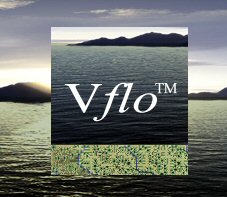 W
WVflo is a commercially available, physics-based distributed hydrologic model generated by Vieux & Associates, Inc. Vflo uses radar rainfall data for hydrologic input to simulate distributed runoff. Vflo employs GIS maps for parameterization via a desktop interface. The model is suited for distributed hydrologic forecasting in post-analysis and in continuous operations. Vflo output is in the form of hydrographs at selected drainage network grids, as well as distributed runoff maps covering the watershed. Model applications include civil infrastructure operations and maintenance, stormwater prediction and emergency management, continuous and short-term surface water runoff, recharge estimation, soil moisture monitoring, land use planning, water quality monitoring, and water resources management.
 W
WThe Wolfram Language is a general multi-paradigm computational language developed by Wolfram Research. It emphasizes symbolic computation, functional programming, and rule-based programming and can employ arbitrary structures and data. It is the programming language of the mathematical symbolic computation program Mathematica.